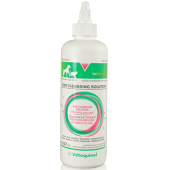Dogs don’t choose what they eat: we do. Some owners will prioritize budget, efficiency and safety. Others want their pet to enjoy the kind of food they may have hunted in the wild. Whether it’s dry or raw, every kind of dog food has pros and cons. Here’s a comparison to help you decide what you feel is best for your buddy.
Dry dog food
Dry dog food is made from protein (usually from meat), grain and other ingredients which are processed into kibble, small pellets that are easily packaged, stored and served.
Pros
While quality and price can vary widely, dry dog food is typically the most affordable and most convenient option. No freezing or preparation is required; the appropriate serving can simply be scooped into your dog’s food dish at regular feeding times.
In Canada, all dog food manufacturers must comply with our country’s requirements for beef processing and label information. Reputable manufacturers will also be members of the Pet Food Association of Canada (PFAC), meaning that they meet the high standards for nutrition, safety, and labeling set by the Association of American Feed Control Officials (AAFCO).
Cons
Like most processed foods, dry dog food may contain unfamiliar ingredients. Depending on the product, “chicken flavour” kibble may feature very little poultry. The cooking process may change the digestibility of proteins and result in the loss of some nutrients, but these losses are generally adjusted for as part of the food manufacturing process.
Things you can do
Ask your veterinary clinic for recommendations on the most suitable dry food for your dog and appropriate serving quantity. It may be possible to include canned food, healthy treats or homemade recipes to add some variety to your dog’s diet, following your veterinarian’s advice.
Raw dog food
Raw dog food may be purchased commercially, but some pet owners choose to prepare their own from fresh meat, bones, fruit and vegetables.
Pros
Preparing a raw diet for your dog on your own provides you with full control over what goes into the bowl. You can tailor recipes that take into account your dog’s age, breed, dietary restrictions and personal preferences. You can use fresh ingredients and vary the menu.
Given the choice, your furry friend will prefer to sink their teeth into a prime cut of lamb rather than the dry “meat meal” version.
Cons
Preparing raw dog food from scratch is time consuming. Storing and handling raw ingredients increase the risk of contamination. Bacteria such as Salmonella, Listeria monocytogenes or Escherichia coli can affect not only your dog, but family members as well. Feeding your dog fresh meat every day can quickly become expensive, and storage may be an issue if buying meat in bulk or preparing multiple servings that need to be refrigerated.
Ensuring that you’re providing your furry friend with all the nutrients they need from a homemade diet can be very challenging. Even a slightly unbalanced diet can result in nutrient deficiencies and health problems.
Things you can do
Be careful when preparing and handling raw food. Don’t leave raw food sitting in your pet’s bowl too long. Let your veterinarian know if your dog follows a raw food diet. They may take some additional safety measures when handling your pet (such as wearing gloves), monitor certain potential health issues more closely, and provide you with appropriate resources on food safety and creating a nutritionally balanced diet.






